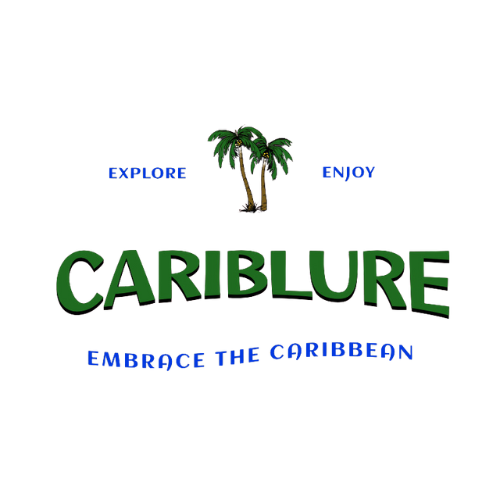Did you know that the number of Caribbean countries is a bit of a mystery? You might have thought there were just 13, but actually, there are 26! Confused already? Well, hold on tight because we’re about to take a fascinating journey through the captivating world of the Caribbean, where the question of how many countries are hidden within this tropical paradise is sure to surprise you. Get ready to explore the enchanting diversity of the Caribbean islands and unlock the secrets of this intriguing region.
History of the Caribbean
Colonization and European powers
The history of the Caribbean is deeply intertwined with colonization and the European powers that sought to establish dominance in the region. Starting in the late 15th century, the Caribbean became a focal point for European exploration and expansion. Spain was the first European power to make significant inroads, followed by other nations such as England, France, and the Netherlands. These European powers established colonies throughout the Caribbean, exploiting the region’s resources and indigenous populations.
The impact of slavery and the transatlantic slave trade
One of the most devastating chapters in Caribbean history is the impact of slavery and the transatlantic slave trade. Millions of Africans were forcibly brought to the Caribbean to work as slaves on sugar plantations and other agricultural enterprises. This history of slavery has left a deep and lasting impact on the region, shaping its demographics, culture, and social structures. The transatlantic slave trade, driven by European demand for labor, caused immeasurable suffering and contributed to the development of Caribbean society as we know it today.
Independence movements and the formation of Caribbean nations
Despite the dark history of colonization and slavery, the Caribbean also saw the rise of independence movements and the eventual formation of Caribbean nations. In the 19th and 20th centuries, many countries in the Caribbean, including Jamaica, Haiti, and Trinidad and Tobago, gained independence from their colonial rulers. These independence movements were driven by a desire for self-determination, equality, and freedom. Today, the Caribbean is home to a diverse range of independent nations, each with its own unique history, culture, and identity.
Caribbean Geographical Overview
Location and boundaries
The Caribbean region is located in the western Atlantic Ocean, and it stretches from the southern coast of the United States to the northern coast of South America. It is comprised of thousands of islands, islets, and cays, along with the surrounding coasts. The geographical boundaries of the Caribbean are not strictly defined and can vary depending on different interpretations.
Archipelago and island countries
The Caribbean is often referred to as an archipelago due to its vast number of islands. However, it is important to note that not all islands in the Caribbean are independent countries. Many islands are part of larger island countries, such as Cuba or the Dominican Republic, while others are overseas territories of European nations, such as Puerto Rico, a territory of the United States. The diversity of the Caribbean extends not only to its people and culture but also to its political organization.
Geographical features
The geography of the Caribbean is as varied as its political landscape. The region is renowned for its stunning white-sand beaches, crystal-clear turquoise waters, and lush tropical rainforests. Some of the notable geographical features of the Caribbean include the Greater Antilles, which consists of Cuba, Hispaniola (shared by Haiti and the Dominican Republic), Jamaica, and Puerto Rico. The Lesser Antilles, on the other hand, are a chain of small islands that stretch from the Virgin Islands in the north to Trinidad and Tobago in the south. Volcanoes, such as those found on the islands of Martinique and Montserrat, contribute to the unique geology of the region.
The Caribbean political organization
The Caribbean Community (CARICOM)
The Caribbean Community (CARICOM) is an organization that seeks to promote economic integration and cooperation among its member states. Founded in 1973, CARICOM aims to strengthen the collective voice and bargaining power of its member countries in the international arena. The organization focuses on areas such as economic development, trade, and foreign policy coordination. CARICOM plays a crucial role in fostering regional unity and addressing common challenges faced by Caribbean nations.
Caribbean Single Market and Economy (CSME)
A key pillar of CARICOM is the Caribbean Single Market and Economy (CSME). The CSME aims to create a single market among CARICOM member states, allowing for the free movement of goods, services, capital, and labor. By facilitating regional integration and removing trade barriers, the CSME seeks to create a more robust and competitive regional economy. The establishment and implementation of the CSME have presented both benefits and challenges to participating countries, and its success is crucial for achieving greater economic integration in the Caribbean.
Regional organizations and alliances
In addition to CARICOM, there are several other regional organizations and alliances that play a role in shaping Caribbean politics and fostering cooperation among countries. The Organization of Eastern Caribbean States (OECS) is a sub-regional organization that promotes economic integration and cooperation among its member states. The Association of Caribbean States (ACS) brings together countries from the wider Caribbean region to address common challenges and promote sustainable development. These regional organizations and alliances serve as platforms for dialogue and collaboration, enhancing the Caribbean’s ability to address regional issues collectively.
Caribbean Countries and Territories
Definition of a Caribbean country
Defining what constitutes a Caribbean country can be a subject of debate. While some argue that it should encompass only independent states, others argue for a broader definition that includes territories and dependencies. The Caribbean is a region marked by diversity, both in its independent countries and in its territories, which share historical, cultural, and geographic ties.
List of 13 recognized Caribbean countries
There are 13 officially recognized Caribbean countries. These countries are Antigua and Barbuda, the Bahamas, Barbados, Cuba, Dominica, the Dominican Republic, Grenada, Haiti, Jamaica, Saint Kitts and Nevis, Saint Lucia, Saint Vincent and the Grenadines, and Trinidad and Tobago. Each of these countries has its own distinct history, culture, and political system. They vary in size, population, and economic development, but they all contribute to the rich tapestry of the Caribbean region.
List of additional Caribbean territories and dependencies
In addition to the recognized Caribbean countries, there are several territories and dependencies in the region that have ties to European nations or the United States. These include Anguilla, Aruba, Bermuda, Bonaire, the British Virgin Islands, the Cayman Islands, Curaçao, Guadeloupe, Martinique, Montserrat, Puerto Rico, Saba, Saint Barthélemy, Saint Martin, Saint Pierre and Miquelon, Sint Eustatius, Sint Maarten, Turks and Caicos Islands, and the United States Virgin Islands. These territories have varying degrees of autonomy and political affiliation, and their relationship with their parent countries is often subject to debate and discussion.

Controversy and Debate
Different criteria for inclusion
The question of whether there are 13 or 26 Caribbean countries depends on the criteria one chooses to use for inclusion. If only independent states are considered, then the number is 13. However, if territories and dependencies are also taken into account, the number increases to 26. The criteria for inclusion can vary depending on factors such as political autonomy, historical ties, or cultural identity.
Historical and cultural variations
The diversity of historical and cultural experiences within the Caribbean further complicates the debate over the classification of countries. Some argue that the distinct history and cultural identity of territories and dependencies justify their inclusion as separate entities. Others contend that these entities are closely tied to their parent countries and should not be considered independent. The complex interplay between history, culture, and politics fuels the ongoing controversy surrounding the classification of Caribbean countries.
Recognition by international organizations
The recognition of Caribbean countries by international organizations is another aspect that adds to the debate. Some international organizations recognize only independent states as members, while others may grant membership or observer status to territories and dependencies. The inclusion or exclusion of territories and dependencies from regional and international organizations can have implications for their ability to participate in decision-making and access resources. Recognition by international organizations is a crucial aspect of Caribbean countries’ engagement with the global community.
The Classification Debate
Arguments for 13 Caribbean countries
Those who argue for 13 Caribbean countries emphasize the significance of political autonomy and statehood. They believe that the classification should be limited to independent states that have achieved sovereignty. Supporters of this viewpoint point to the unique history, culture, and political systems of independent Caribbean countries as reasons for their distinct classification.
Arguments for 26 Caribbean countries
On the other hand, proponents of the 26 Caribbean countries classification argue for a broader inclusion that accounts for territories and dependencies. They highlight the historical, economic, and cultural ties that exist between these territories and their parent countries. Advocates for this perspective assert that these territories have their own unique identities, even if they possess varying degrees of political autonomy.
Contemporary viewpoints and ongoing discussions
The classification debate continues to evolve as new perspectives and viewpoints emerge. Some scholars and policymakers advocate for a more fluid understanding of Caribbean countries, recognizing the complexities of their political and cultural landscapes. They argue for an inclusive approach that considers both independent states and territories, acknowledging the diverse relationships and shared interdependencies within the Caribbean.

Impact on Tourism and Regional Identity
Tourism as an economic driver
Tourism plays a significant role in the Caribbean economy, driving economic growth, job creation, and foreign exchange earnings. The region’s natural beauty, diverse cultures, and historical sites attract millions of tourists each year. Both independent Caribbean countries and territories benefit from tourism, with visitors contributing to local businesses, hotels, and attractions. The tourism industry has become a vital pillar of the Caribbean economy, supporting livelihoods and fostering economic development.
Marketing and branding challenges
Marketing and branding the Caribbean region present unique challenges due to the diversity of countries and territories within it. Each destination has its own distinct selling points and offerings, from the vibrant culture of Jamaica to the beautiful beaches of Barbados. Balancing the promotion of individual destinations with the collective branding of the entire Caribbean region requires strategic coordination and cooperation. Efforts to market the Caribbean often emphasize its natural beauty, welcoming hospitality, and rich cultural heritage.
Caribbean identity and cultural diversity
The Caribbean’s rich cultural diversity is both a strength and a challenge when it comes to regional identity. The region is home to a mix of indigenous peoples, African descendants, Europeans, and people of various other ethnic backgrounds. These diverse cultural influences have shaped Caribbean identity, which is celebrated and appreciated by both locals and visitors. However, the challenge lies in maintaining a sense of unity and common purpose across such a culturally diverse region. Efforts to promote cultural exchange, heritage preservation, and inter-Caribbean collaboration are essential for fostering a shared regional identity.
Conclusion
No definitive answer
As the article has outlined, there is no definitive answer to the question of whether there are 13 or 26 Caribbean countries. The classification of Caribbean countries is a complex and multifaceted issue that involves a range of historical, political, cultural, and geographical considerations. Different criteria for inclusion and varying perspectives contribute to ongoing debates surrounding this topic.
Recognition and inclusivity
Regardless of the number of Caribbean countries, it is essential to promote recognition and inclusivity within the region. Valuing the identities, histories, and aspirations of all Caribbean countries, including both independent states and territories, is crucial for fostering regional unity, cooperation, and development. Respecting the autonomy and unique characteristics of each Caribbean entity contributes to a sense of shared purpose and strengthens the region’s collective voice on the global stage.
Importance of regional cooperation and unity
Amidst the discussions and debates over classification, one thing remains clear: regional cooperation and unity are vital for the Caribbean’s future. The challenges faced by Caribbean countries, whether they are independent or territories, are often shared, including climate change, economic development, and social issues. By working together through organizations such as CARICOM, the Caribbean can tackle these challenges collectively, harnessing the region’s strength, resilience, and rich diversity. Through collaboration and shared vision, the Caribbean can continue to thrive as a region of immense cultural, historical, and geographical significance.




